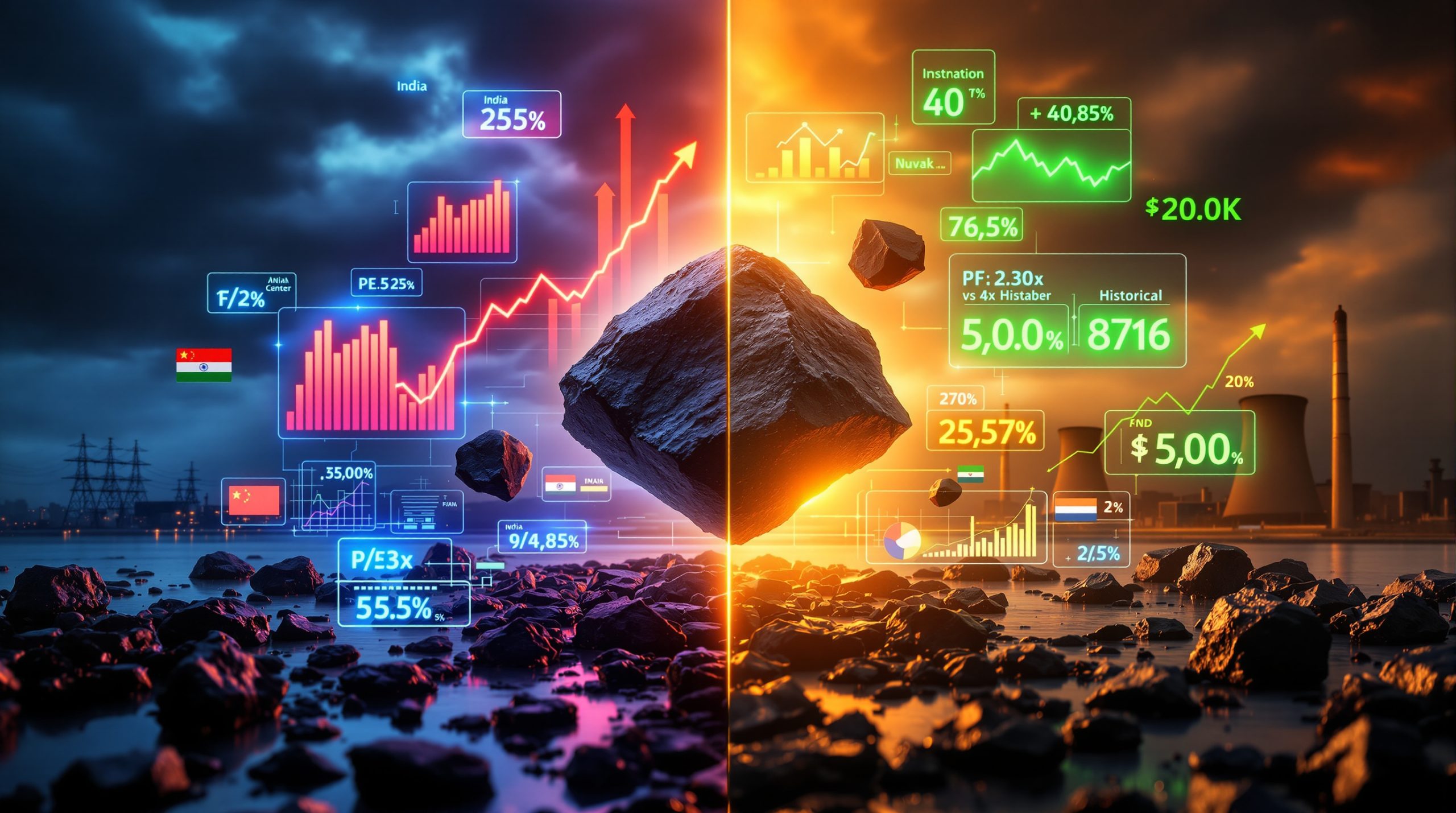Understanding Gold's Elevated Position in Today's Markets
Gold has carved out a remarkable trajectory throughout 2025, with prices climbing to approximately US$2,748 per ounce as of October 2025, representing substantial gains of around 33% year-to-date. This performance, while impressive, falls short of the extraordinary 66% rally suggested in some market commentary, highlighting the importance of accurate price tracking in volatile precious metals markets. Furthermore, gold prices analysis 2025 reveals the complexity behind these remarkable movements.
The current rally draws inevitable comparisons to the legendary 1979 bull run, when gold soared from approximately US$226 per ounce to US$850 within twelve months—a staggering 276% increase. While today's gains remain more modest in percentage terms, the absolute price levels have reached new territories that demand careful analysis of sustainability factors, particularly when examining the historic 3000 surge patterns.
Market dynamics supporting gold's ascent include unprecedented central bank accumulation, with global monetary authorities purchasing over 1,037 tonnes in 2023 according to World Gold Council data. Geopolitical tensions spanning multiple regions, from Middle Eastern conflicts to great power competition, continue generating safe-haven demand that traditional portfolio theory suggests benefits precious metals.
However, the Federal Reserve Bank of San Francisco's research indicates that gold prices respond primarily to four key variables: real interest rates, US dollar exchange rate movements, financial market volatility as measured by the VIX, and central bank policy expectations. Understanding these fundamental drivers becomes crucial for assessing whether could gold prices crash in 2026 and current elevated prices could sustain themselves through 2026.
Why Gold Prices Might Experience a Significant Decline in 2026
Declining Inflationary Pressures Could Reduce Gold's Appeal
The gradual erosion of inflation expectations across major economies represents perhaps the most significant threat to gold's continued strength. Current US Consumer Price Index inflation stands at 2.4% year-over-year as of September 2025, marking a substantial decline from the peak of 9.1% reached in June 2022. This moderation reflects successful central bank policies in taming price pressures through aggressive monetary tightening.
Academic research published in the Journal of Banking & Finance demonstrates that gold serves as an effective inflation hedge primarily over extended periods exceeding ten years, while shorter-term relationships prove considerably weaker. As inflation expectations normalize toward central bank targets, the traditional investment case for precious metals as portfolio insurance becomes less compelling.
Australian inflation data tells a similar story, with the Consumer Price Index registering 3.8% annually in the second quarter of 2025, while Eurozone inflation has fallen even further to 1.7% year-over-year in September 2025. This synchronized global disinflation trend suggests that the post-pandemic price surge may be transitioning toward more stable conditions.
When inflation fears subside, investor capital typically flows toward yield-generating assets offering superior long-term growth potential. Government bonds become more attractive as real returns exceed inflation, while equity markets benefit from improved corporate earnings visibility in stable price environments.
Rising Real Interest Rates Present Opportunity Cost Challenges
Real interest rates—nominal rates adjusted for inflation—remain a critical determinant of gold valuation due to opportunity cost considerations. The current US 10-year Treasury yield of approximately 4.2%, combined with inflation at 2.4%, produces a real yield of roughly 1.8%. This represents a meaningful opportunity cost for holding non-yielding assets like precious metals.
Federal Reserve Bank of Dallas research indicates that each percentage point increase in real interest rates historically correlates with an 8-10% decline in gold prices, as investors face increasing incentives to hold interest-bearing alternatives. The Federal Reserve's current target rate range of 4.75-5.00% maintains restrictive monetary conditions despite the September 2025 rate cut of 50 basis points.
Should central banks maintain hawkish policies or implement fewer rate cuts than markets anticipate, the attractiveness of bonds, savings accounts, and dividend-paying equities would increase substantially. Historical analysis demonstrates that positive real interest rate environments create headwinds for precious metals, as investors can achieve inflation-beating returns through traditional financial instruments.
The persistence of elevated real rates reflects central bank commitment to maintaining price stability, potentially creating a structural challenge for gold's investment appeal throughout 2026 and beyond.
US Dollar Strength Could Pressure International Demand
Gold's denomination in US dollars creates inherent currency risk for international investors, with exchange rate fluctuations significantly impacting purchasing power. The US Dollar Index currently trades around 104.3, while the Australian dollar has weakened to approximately US$0.665, meaning American gold prices translate to roughly A$4,130 per ounce for Australian investors.
Academic research published in the Journal of International Money and Finance found that each 1% appreciation in the US dollar historically correlates with a 0.5-1% decline in gold prices. This relationship reflects reduced purchasing power for holders of euros, yen, yuan, and other currencies when gold becomes more expensive in local terms.
Dollar strength typically emerges during periods of US economic outperformance or when investors seek safe-haven exposure to American assets. Should the Federal Reserve maintain relatively hawkish policies compared to other major central banks, continued dollar appreciation could create significant headwinds for global gold demand.
The World Gold Council's data indicates that historical correlations between the US dollar and gold prices range from -0.4 to -0.7, suggesting this inverse relationship remains a fundamental market dynamic that could gold prices crash in 2026 scenarios.
Market Sentiment Shifts Toward Risk Assets
The transition from defensive to growth-oriented investment environments historically coincides with gold price weakness. When economic expansion accelerates, corporate earnings improve, and geopolitical tensions ease, investors typically rotate capital from safe-haven assets toward higher-returning alternatives.
Current market sentiment indicators present mixed signals, with the VIX volatility index hovering around 20-22 levels indicating moderate uncertainty, while the S&P 500 has delivered approximately 20% returns year-to-date through 2025. This combination suggests markets remain in a transitional phase between risk-off and risk-on environments.
Portfolio research from JP Morgan Asset Management identifies typical rotation patterns during sentiment shifts, where investors reduce allocation to tail-risk hedges including gold, VIX calls, and long-duration Treasuries while increasing exposure to equities, high-yield bonds, and emerging markets. The 2020-2021 equity rally provides a relevant example, with gold declining approximately 18% from its August 2020 peak despite continued monetary accommodation.
Technology stocks, cyclical sectors, and emerging market equities often outperform precious metals when investor confidence returns and economic growth expectations improve. This rotation effect could intensify if central bank rate cuts successfully stimulate economic activity without reigniting inflation concerns.
Central Bank Selling Could Reverse Current Dynamics
Central bank gold purchases have reached record levels, with global monetary authorities acquiring approximately 1,037 tonnes in 2023 and 694 tonnes through the third quarter of 2024 according to World Gold Council data. However, this supportive trend could reverse if central banks need to enhance liquidity positions or rebalance reserve portfolios.
The psychological impact of central bank selling often exceeds actual volume effects, as market participants closely monitor official sector activities for signals about long-term value assessments. International Monetary Fund research identifies three primary scenarios triggering central bank gold sales: balance of payments crises requiring foreign exchange, deliberate reserve diversification programs, and coordinated international agreements.
Major Central Bank Gold Holdings (2024):
| Country/Institution | Gold Holdings (Tonnes) | Percentage of Reserves |
|---|---|---|
| United States | 8,133.5 | 76.6% |
| Germany | 3,351.5 | 69.7% |
| IMF | 2,814.0 | N/A |
| Italy | 2,451.8 | 67.4% |
| France | 2,436.9 | 65.1% |
| Russia | 2,332.7 | 24.8% |
| China | 2,264.3 | 4.2% |
Even modest selling by major holders could signal a significant shift in official sector sentiment, potentially triggering broader market reassessment of gold's fundamental value proposition.
Factors That Could Support Continued Gold Price Strength
Persistent Geopolitical Tensions May Sustain Safe-Haven Demand
Global conflict zones continue generating the type of uncertainty that traditionally benefits precious metals as portfolio insurance. The February 2022 Russia-Ukraine invasion triggered a 7% gold rally within two weeks, reaching US$2,050 per ounce before stabilising, while the October 2023 Hamas-Israel conflict escalation produced an 8% gain over the subsequent month.
Research published in the Journal of International Financial Markets demonstrates that elevated Geopolitical Risk Index levels have significant predictive power for gold returns, with high GPR readings preceding average price increases of 3-5% over subsequent three-month periods. This relationship reflects gold's role as a store of value during periods of political and economic uncertainty.
Current tension points spanning the Middle East, potential Taiwan Strait conflicts, and broader great power competition create ongoing demand for assets lacking counterparty risk. The fragmentation of global trade relationships and increasing economic nationalism may also support long-term precious metals demand as countries diversify away from dollar-denominated reserves.
Individual geopolitical events can trigger substantial single-day gold rallies as investors seek safety, with historical precedent showing that such moves often sustain themselves during prolonged uncertainty periods. This dynamic provides fundamental support for prices even during periods of reduced speculative interest.
Economic Weakness Could Prompt Aggressive Monetary Easing
Central banks' recent pivot toward accommodative policies suggests growing concerns about economic growth sustainability. The Federal Reserve's September 2025 rate cut of 50 basis points marked the first reduction since March 2020, signalling potential willingness to provide additional stimulus if economic conditions deteriorate.
Federal Reserve Bank of St. Louis analysis indicates that gold prices historically perform well during monetary policy easing cycles, with average returns of 15-20% during rate-cutting periods. The 2008-2014 quantitative easing programmes provide compelling precedent, with gold prices increasing from approximately US$800 per ounce to peak at US$1,900 in 2011—a 138% gain as monetary expansion concerns drove safe-haven demand.
Current economic indicators present mixed signals, with US GDP growth registering 3.0% (annualised) in the second quarter of 2025 while unemployment has risen to 4.1% as of September 2025. Should recession risks materialise, monetary authorities may implement aggressive easing measures including quantitative easing programmes that typically weaken currencies and reduce real interest rates.
Stagflation scenarios combining weak growth with persistent inflation represent particularly bullish environments for precious metals, as traditional asset classes struggle to provide adequate real returns during such periods.
Inflation May Prove More Persistent Than Expected
Post-pandemic economic dynamics have challenged traditional inflation models and central bank forecasting capabilities. While headline Consumer Price Index inflation has moderated, core measures excluding food and energy remain elevated at 3.3% year-over-year in September 2025, well above Federal Reserve targets.
Bank for International Settlements research suggests that inflation may exhibit different dynamics than pre-2020 patterns due to structural changes including supply chain reconfiguration, labour market shifts, and deglobalisation trends. Shelter costs, representing 33% of CPI, continue showing elevated growth at 5.2% year-over-year, while services inflation persists at 4.7% annually.
Components Showing Inflation Persistence:
• Housing and shelter costs: 5.2% year-over-year growth
• Services sector inflation: 4.7% annually
• Wage growth maintaining upward pressure
• Supply chain disruption effects lingering
• Deglobalisation increasing production costs
International Monetary Fund research identifies several factors contributing to inflation stickiness: wage-price spirals, embedded inflation expectations, supply-side constraints, and fiscal policy expansion. If inflation proves more persistent than central bank projections suggest, gold's role as a store of value becomes increasingly relevant for portfolio construction.
Continued Central Bank Accumulation
Emerging market central banks have demonstrated sustained appetite for gold reserves as part of broader monetary system diversification strategies. The World Gold Council's 2024 Central Bank Gold Reserves Survey found that 29% of central banks plan to increase holdings over the next twelve months—the highest percentage since the survey began in 2018.
Recent Central Bank Gold Purchases:
• 2022: 1,136 tonnes (record year)
• 2023: 1,037 tonnes (second-highest on record)
• 2024 (through Q3): 694 tonnes
• China: Added 225 tonnes in 2023
• Turkey: Purchased 191 tonnes in 2023
• India: Increased reserves by 19 tonnes in 2023
This trend reflects concerns about currency weaponisation and desires for monetary system diversification among emerging economies. Central bank accumulation provides fundamental demand that can sustain prices even during periods of reduced private investor interest, creating a floor effect for precious metals markets.
The continuation of official sector buying addresses de-dollarisation strategies among BRICS nations and others seeking alternatives to dollar-denominated reserve assets, suggesting this supportive dynamic may persist regardless of shorter-term price movements, particularly as evidenced in the market performance surge.
Sovereign Debt Concerns May Drive Hard Asset Demand
Rising government debt levels across developed economies raise questions about long-term fiscal sustainability and currency stability. When debt-to-GDP ratios reach concerning levels, investors often seek alternatives to government bonds and fiat currencies, with precious metals offering appeal as assets without counterparty risk.
Gold's monetary metal characteristics become particularly valuable during sovereign debt crises or currency debasement concerns, providing portfolio diversification benefits that traditional fixed-income investments cannot match. Historical precedent demonstrates that fiscal instability periods often coincide with precious metals outperformance as investors question paper currency stability.
The unique properties of gold—including portability, durability, and universal recognition—support its role as a monetary reserve during periods when traditional financial system stability comes under question. This fundamental characteristic provides long-term support for demand regardless of shorter-term market dynamics.
Historical Context: Lessons from the 1980 Gold Crash
The parallels between current market conditions and the late 1970s gold boom provide valuable insights for contemporary investors attempting to assess whether could gold prices crash in 2026. The 1979 rally occurred amid extraordinary circumstances including 14% US inflation, Soviet military interventions, the Iranian revolution, and widespread dollar scepticism.
However, when these conditions reversed through aggressive Federal Reserve action under Paul Volcker and geopolitical stabilisation, gold prices collapsed dramatically from their January 1980 peak of US$850 per ounce. The subsequent decline proved both severe and prolonged, with prices falling to approximately US$300 over two years—a 65% correction that established a cautionary precedent for precious metals investors.
Key Factors in the 1980s Gold Crash:
| Factor | Impact | Duration | Outcome |
|---|---|---|---|
| Fed rate hikes to 20%+ | Crushed inflation expectations | 2-3 years | Real yields turned highly positive |
| Geopolitical tension reduction | Reduced safe-haven demand | Ongoing | Risk-on sentiment returned |
| Economic policy credibility | Strengthened dollar confidence | Decade+ | Dollar became preferred reserve |
| Speculative bubble deflation | Eliminated momentum buying | 1-2 years | Price discovery resumed |
Gold remained below US$500 per ounce for nearly two decades following the 1980 peak, not returning to inflation-adjusted highs until the 2008 financial crisis. This prolonged bear market demonstrates how quickly market sentiment can shift when fundamental conditions change, particularly regarding monetary policy credibility and real interest rate environments.
The Reagan administration's economic policies, combined with Federal Reserve success in taming inflation, created a structural shift away from precious metals toward yield-generating assets. Corporate earnings growth, dividend yields, and positive real bond returns provided compelling alternatives that precious metals could not match during this extended period.
Modern investors should note that while current conditions differ significantly from the 1970s—including lower baseline inflation, different geopolitical configurations, and altered central bank frameworks—the basic economic principles governing gold valuation remain consistent. Real interest rates, currency stability, and investor sentiment toward risk assets continue driving precious metals performance.
Investment Strategy Implications
Current gold holders face complex portfolio management decisions given elevated price levels and uncertain market conditions. Position sizing becomes critical, with most investment advisors recommending precious metals allocations between 5-10% of total portfolio value to balance diversification benefits against concentration risks.
For Current Gold Holders:
• Consider profit-taking strategies if positions represent outsized allocations
• Implement stop-loss orders to protect gains from potential rapid reversals
• Diversify precious metals exposure across gold, silver, and platinum
• Monitor real interest rate trends as primary valuation drivers
• Balance precious metals with other inflation hedges
For Potential Buyers:
• Wait for technical correction opportunities before establishing positions
• Focus on dollar-cost averaging rather than lump-sum investments
• Consider gold mining equities as leveraged exposure with additional risks
• Evaluate currency hedging for international exposure
• Monitor central bank policy communications for timing signals
Portfolio Construction Considerations:
• Maintain appropriate allocation regardless of short-term price movements
• Include other commodity exposure for broader inflation protection
• Consider Treasury Inflation-Protected Securities (TIPS) as alternatives
• Balance defensive assets with growth-oriented investments
• Regular rebalancing to maintain target allocations
Gold mining equities offer leveraged exposure to underlying metal prices but introduce additional operational, regulatory, and management risks. Companies like Newmont Corporation, Barrick Gold, and Australian producers including Northern Star Resources provide indirect precious metals exposure with potential for dividend income and operational leverage during price rallies.
However, mining stocks historically exhibit higher volatility than physical gold and may underperform during market stress periods when investors prefer direct precious metals exposure. This dynamic became evident during recent gold rallies when physical metal outperformed many mining equities despite record commodity prices.
Risk Management and Timing Considerations
The timing of potential gold price corrections remains highly uncertain, with expert forecasts ranging from mid-2026 peaks followed by declines to continued strength through 2027. The gold price forecast suggests multiple scenarios, while successful precious metals investing requires acknowledging this uncertainty while preparing for multiple scenarios through appropriate risk management disciplines.
Key Monitoring Indicators:
• Federal Reserve policy communications and real rate trajectories
• Central bank gold purchase/sale announcements
• Geopolitical development resolution or escalation
• US dollar strength relative to major trading partners
• Inflation expectation measures and actual price data
• Market sentiment indicators including VIX and risk-on/risk-off measures
Technical analysis can provide additional insights into potential timing, with support and resistance levels, momentum indicators, and volume patterns offering clues about market psychology. However, precious metals markets can experience rapid sentiment shifts that challenge traditional chart analysis, particularly during geopolitical events or central bank policy changes. Consequently, understanding gold-stock market trends becomes essential for comprehensive analysis.
Risk Management Strategies:
• Position sizing appropriate to overall portfolio risk tolerance
• Stop-loss orders to protect against rapid declines
• Diversification across physical metals, ETFs, and mining stocks
• Regular rebalancing to maintain target allocations
• Currency hedging for international investors
• Emergency liquidity planning for portfolio needs
The possibility that could gold prices crash in 2026 should not be dismissed, particularly given historical precedent and current elevated valuations. However, the unique characteristics of contemporary monetary policy, geopolitical tensions, and central bank behaviour suggest that any correction may differ significantly from past experiences.
Market participants must balance multiple competing factors: declining inflation supporting reduced precious metals demand, elevated real interest rates creating opportunity costs, potential dollar strength pressuring international buyers, while simultaneously considering persistent geopolitical risks, central bank accumulation trends, and concerns about fiscal sustainability.
Disclaimer: The analysis presented reflects current market conditions and historical precedent but should not be construed as specific investment advice. Precious metals prices can be highly volatile, and past performance does not guarantee future results. Investors should consult with qualified financial advisors before making investment decisions and carefully consider their risk tolerance, investment objectives, and time horizon when evaluating precious metals exposure.
Prudent investors will maintain appropriate diversification, position sizing, and risk management disciplines regardless of short-term price movements, recognising that gold's role as portfolio insurance extends beyond immediate return considerations to include protection against tail risks and systemic financial disruption scenarios that may emerge unexpectedly.
Ready to Navigate the Next Phase of Precious Metals Markets?
Whether gold prices soar to new heights or experience the predicted 2026 correction, Discovery Alert's proprietary Discovery IQ model delivers real-time alerts on significant ASX mineral discoveries, empowering subscribers to identify actionable opportunities across gold, silver, and other precious metals companies ahead of broader market movements. Begin your 30-day free trial today and understand why major mineral discoveries can generate substantial returns by exploring Discovery Alert's discoveries page showcasing historic examples of exceptional market outcomes.




